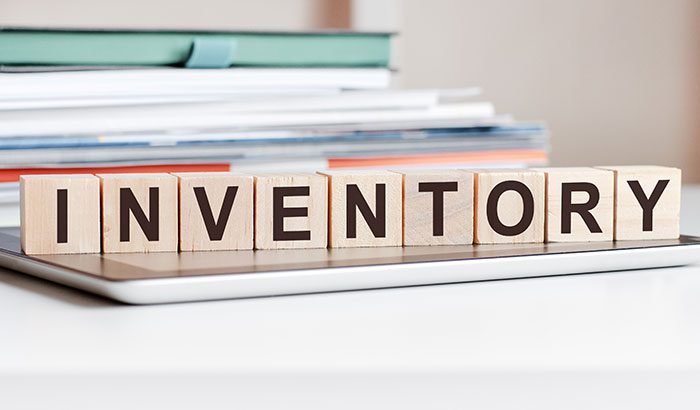Inventory funding allows you to restock your product when you’re running low but are short on funds. Whether you’re keeping up with customer demand or looking to expand your product lines, inventory funding could be just what you need. You can get inventory funding for retail, e-commerce, wholesale purchases, and more.
There are two types of inventory funding, which we’ll be discussing today. Inventory funding can be a game changer for a small business getting its feet off the ground or keeping up with customer demand.
Keep reading to learn more!
What Is Inventory Funding?
Inventory funding is exactly what it sounds like – funding for your inventory to keep your business running even when you’re low on the funds you’d typically use for your inventory. Inventory funding is usually for one of the following purposes:
- Short-term cash shortages
- Preparing for your busy season
- Expanding your product lines
- Access your capital
- Keep up with customer demand
- Increase sales
Inventory funding is different from other small business loans since you don’t need to offer collateral to serve as your lender’s security blanket like you normally would for a secured loan. Inventory funding also bypasses the unsecured small business loan that doesn’t require collateral but limits funding and charges more interest. Neither is ideal.
Inventory funding works differently. The inventory that the funding will purchase is the collateral. If you cannot pay back your loan, you’ll forfeit the inventory as repayment. It’s low risk for you and the lender.
Rates and Terms You Can Expect
Every lender will handle things differently, but there are some universal terms you can expect, like borrowing amounts, repayment terms, APR, and fees.
Your borrowing amount is the loan amount that you’re approved for. This could be the exact amount you request, or it could be less, depending on whether or to what degree you qualify for funding.
Your repayment terms will also vary, but you must pay off most loans within three years. However, most loans are for months, not years.
Your APR, or annual percentage rate, is the interest you’ll pay on the loan. You’ll pay for 100% of the inventory you need plus the interest rate at which you’re approved.
Your fees could include appraisal fees based on the inventory’s value, origination fees, and prepayment penalties.
The 2 Types of Inventory Funding
There are two ways you can go about funding your inventory. You can get either a loan or a line of credit. Both have their advantages and disadvantages. It comes down to what you need for your business.
Inventory Loan
An inventory loan allows you to get all the money you need. The loan will come with repayment terms and fixed monthly payments. The interest rate will be calculated into the monthly payments, so you won’t need to worry about keeping up with payments and interest.
Inventory Line of Credit
A line of credit works differently, which can be in your favor. It works similarly to a credit card, where you have a revolving line of credit that replenishes when you pay it back. The great thing about a credit line is that you only pay interest on the amount you borrow.
For example, your credit line might be for $50,000, but you might only use $45,000. With a credit line, you’ll pay interest on the $45,000, saving you money. With a loan, you’d pay interest on the full $50,000, even if you don’t use all of it.
Is Inventory Funding Right For You?
Now that you understand how inventory funding works and know the kinds you can choose between, it’s time to decide whether this is the right kind of funding for your business. There are advantages and disadvantages to consider.
Pro: Avoid Using Credit
Without inventory funding, some business owners will apply for a loan using their own credit. While this isn’t the worst thing you could do, it’s not ideal since it will affect your personal credit instead of your business’s credit. There is a difference between the two. This also protects you from putting up personal or business assets as collateral.
Pro: Great For Starting A Small Business
Lenders prefer to work with businesses that are highly likely to pay their loans back on time. The more established you are, the more likely you are to pay your loan back.
Now, if you’re starting a small business, you haven’t had time to establish that for yourself. Inventory funding is perfect since you don’t need to be established enough to prove yourself. With your inventory acting as collateral, there’s low risk on the lender’s side.
Con: It’s More Debt
As great as inventory funding is, and as essential as it may be, it’s still debt that must be repaid. Any business owner will agree that it’s better not to owe money to lenders. It’s a liability.
Con: High Interest Rates
The interest rate – the costing of borrowing money – could be higher than is “fair” or affordable for some small business owners. If the interest rate is too high, some small business owners might look for other options.
Lighthouse Financial
Lighthouse Financial specializes in inventory funding for retail, e-commerce, and wholesale purchases for small businesses. We work with start-ups and established businesses who need funding to launch or keep up with customer demand, among other reasons.
While some lenders charge through-the-roof interest rates, Lighthouse Financial offers 0% interest for the first one to two years. We lend anywhere from $10k to $100k with low monthly payments and no time-in-business requirement.
Are you ready to get started? Our Funding Specialists will guide you through three steps: discovery, relationships, and procurement. Applying for inventory funding through Lighthouse Financial won’t affect your credit score. Just keep in mind that, if you’re applying for start-up funding with a credit score under 680, you’ll want to apply with a cosigner.
Ready to get started? Call us at 888.418.1288 or fill out the form on our website, and we’ll get back to you right away. Let Lighthouse Financial help you secure your inventory funding!

